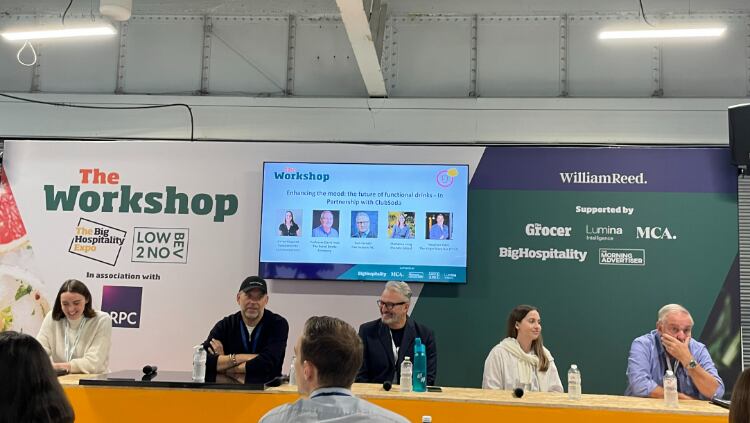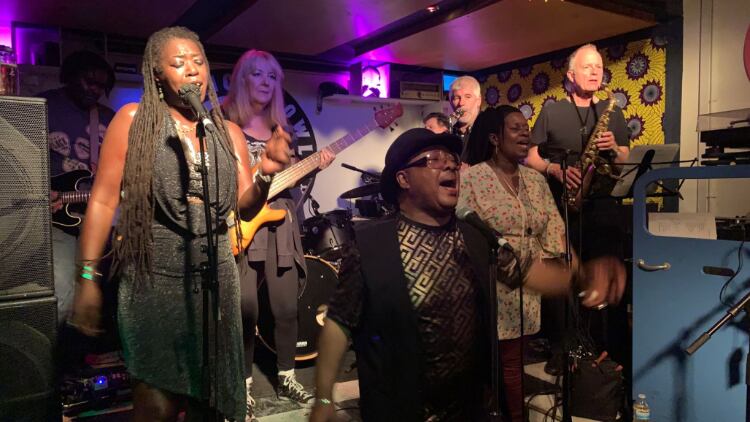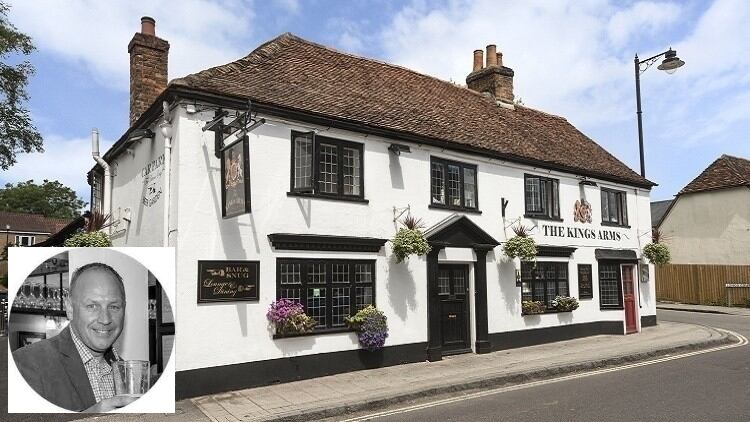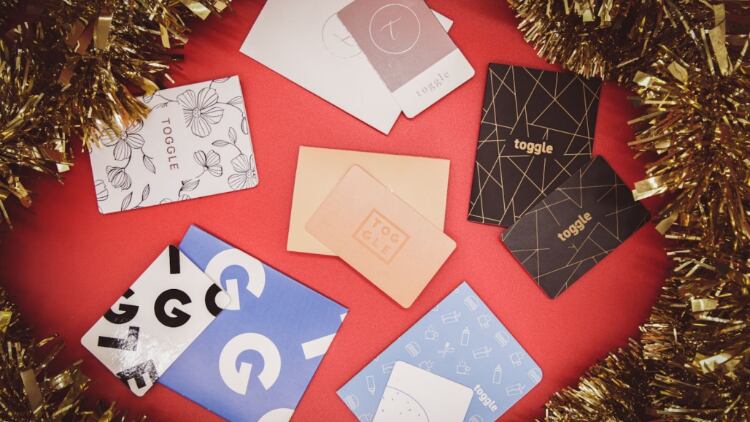The talk, which took place on the Low2No stage, was called ‘Enhancing the mood: the future of functional drinks – in partnership with ClubSoda’. It was chaired by Wonderworks Communications account manager Aaryn Vaughan.
The panel was made up of Imperial College London neuropsychopharmocologist David Nutt, the Mix Global lead strategist Marianne Long, the Virgin Mary Bar operator Vaughan Yates and Five Seasons Ventures co-founder Ivan Farneti.
Yates defined a functional drink as a beverage that affected its consumer. Yet, she said these effects could be real or placebo. For instance, coffee and Red Bull were functional drinks as increased the energy levels of the people drinking them.
Long said there were three types of consumers interested in functional drinks. The first were those who wanted to gain something from drinks, such as nutritional benefits, and the second were those who wanted to make up for something they were missing, like energy.
The third group were those scared of losing something if they switched to alcohol-free drinks.
Prioritising experiences
Since Covid, Farneti said consumers had become much more discerning in what they would pay. However, he said they were much more likely to pay more for an “amazing drinking experience than an amazing drink”, when it came to functional products.
For instance, a glass of wine complete with a cheese board would spark interest over just a glass of wine. “That’s been the game for centuries,” he said.
Yates manned the Virgin Mary Bar in Dublin, Ireland. After the pandemic, the site’s menu was split 50/50 between mood-boosting drinks and non-functional drinks. By May, 80% of sales were coming from functional drinks, so Yates decided to switch to a menu 100% made up of functional drinks.
In new bars opening in the Middle East and Europe, Yates planned to only sell mind-boosting drinks.
Long said consumers generally looked for brands they trusted when trying alcohol-free products, before experimenting more as they discovered their likes and dislikes. They were more likely to enter into the ‘functional space’ as they continued their alcohol-free journey.
Often, as is the case with innovative products, consumers were faced with a list of ingredients they didn’t understand, which could be daunting. Due to this, information and education could go a long way in encouraging customers to try functional drinks, she said.
Yates said the category was difficult to market as it was “really niche”. Customers coming into the bar to try functional drinks wanted to be “wowed” by their effects.
The goal was to convince bartenders and consumers you had a product worth buying, even though it may give less of an effect than alcohol and didn’t taste as good. There was still a “long road ahead” in educating people on the sector, he said.
“Your message has to be simple,” he added. Vaughan agreed: “It’s simple serves that get you sold”.
Hiding science
Farnetti agreed that the challenge was to hide the technicalities of production. “Don’t put science on the label,” he said. “People don’t want to eat technology, people don’t want to drink technology.”
The first time you get a product is because someone recommends it or buys it for you, the second time is because you liked it, Farnetti said.
Don’t forget, he continued, the drink must first be marketed as desirable and enjoyable. Then, you can talk about the science.
If you make the drink interesting and attractive to the customer, they’ll never go back to that boring soft drink they’ve had so many times, added Long.
She said consumers often didn’t see spending on soft drinks at hospitality venues as worth the time as it was not the elevated experience they were seeking. So, functional drinks could fill that gap as compelling alternative.
While there were a lot of sceptics, Long said people were curious about functional drinks. She said marketers should be broadening their audience, focusing on the health-benefits of the products.
Nutt believed the future was in the hands of young people, who would be interested in how the drinks made you feel as well as their health benefits. He said this market should come together with the health drinks market due to the shared science and opportunities of the fields.
Yates said, if one or two “big players” in the alcohol sector were to invest in functional drinks, the market would grow from there.




